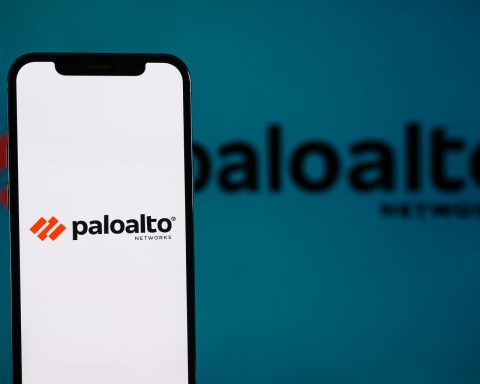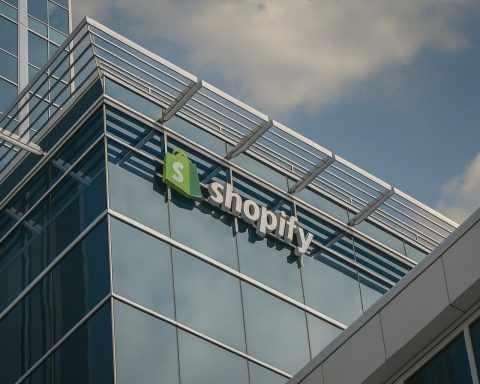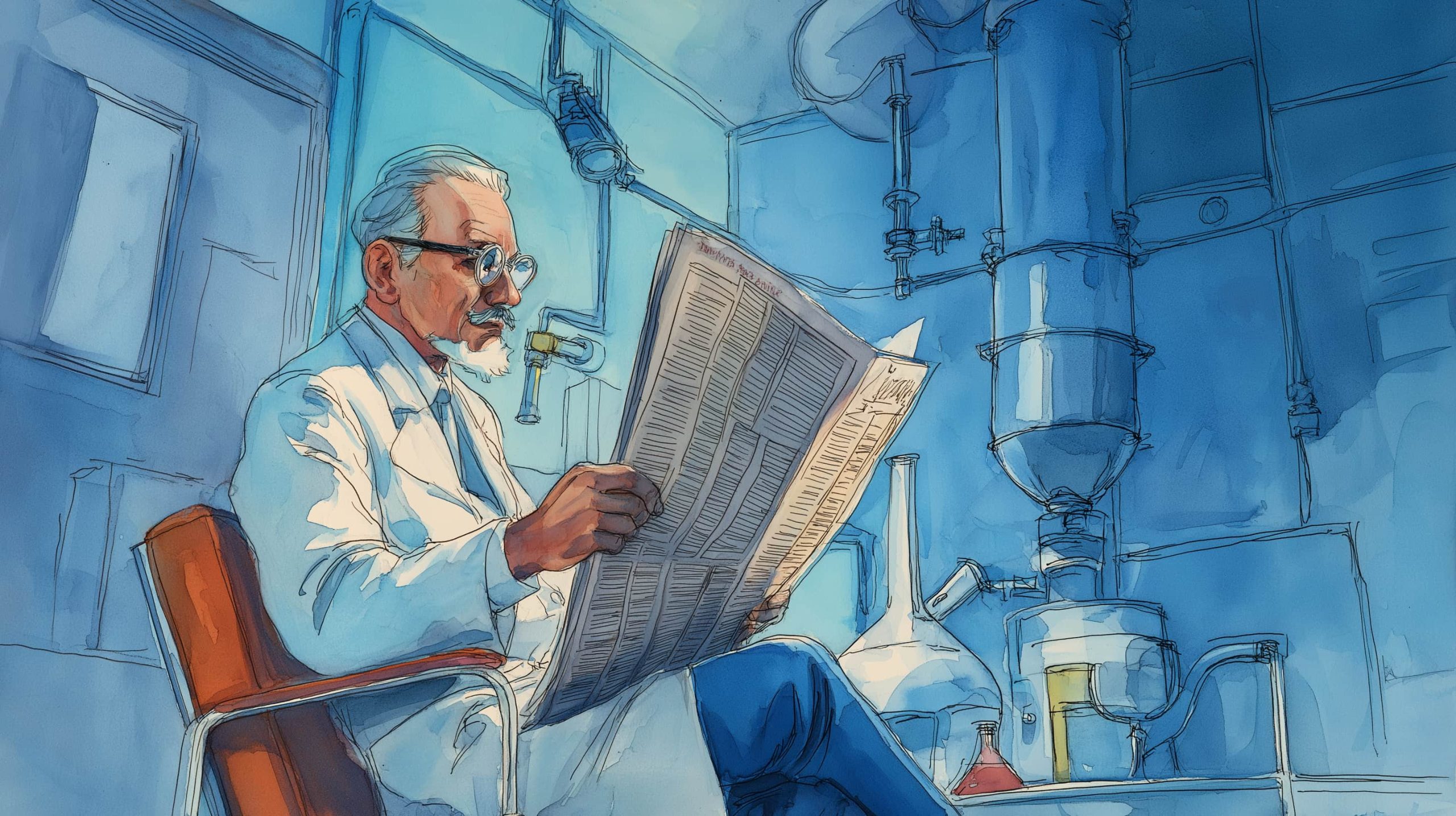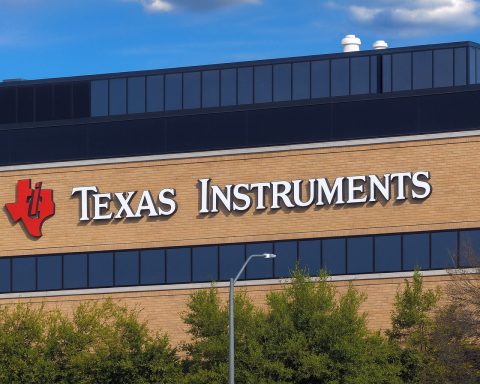- AMD’s Q2 data-center chip sales rose 14% to $3.2 billion but missed forecasts, while Nvidia’s stock surged 73%.
- SMCI shares plunged 18% in one day after missing revenue targets and cutting guidance amid Nvidia delays and rising competition, erasing over $6 billion in value overnight.
- By Aug. 7–8, the AI-chip rally resumed as Nvidia and Broadcom hit all-time highs, and AMD rebounded about 5% while TSMC rose roughly 5% on tariff optimism.
- The U.S. Commerce Department began issuing licenses for Nvidia’s H20 AI GPUs to China, potentially easing an export ban that Nvidia warned could cost $8 billion in sales after Jensen Huang met President Trump.
- A Chinese state media account affiliated with CCTV blasted Nvidia’s H20 chips as not advanced or safe and Beijing summoned Nvidia to prove there are no spyware or backdoors.
- Alphabet, Meta, Amazon, and Microsoft are on pace to spend nearly $400 billion this year on AI-related capex, about a 50% jump from last year.
- Meta Platforms announced a $29 billion financing deal with PIMCO (about $26 billion of debt) and Blue Owl Capital ($3 billion of equity) to fund mega AI data centers named Prometheus and Hyperion.
- SoftBank reported a Q2 profit of ¥422 billion (~$2.9 billion), swinging from a loss, and its shares rose more than 13% in a day, helping Japan’s Topix index above 3,000 for the first time.
- Palantir Technologies posted blowout Aug. 5 results with Q2 sales above $1 billion and a 53% rise in U.S. government revenue, and a new Army program could spend up to $10 billion on Palantir AI over the next decade.
- OpenAI unveiled GPT-5 on Aug. 7 for its 700 million ChatGPT users, with Sam Altman claiming it’s like asking a legitimate expert anything, and Salesforce, Microsoft, and Google quickly announced GPT-5–powered features.
Chipmakers on a Wild Ride: Earnings Hiccups, New Highs & Geopolitical Twists
The past week’s AI chip boom saw both turbulence and triumph. Advanced Micro Devices (AMD) and server-maker Super Micro Computer (SMCI) – once high-flying “AI plays” – plunged after underwhelming earnings, briefly shaking faith in the AI hardware rally. AMD’s data-center chip sales rose 14% in Q2 (to $3.2 billion) but missed forecasts and paled next to Nvidia’s astonishing 73% surge [1]. Its stock slid ~5%, as Jefferies analysts noted AMD’s AI outlook “did not show the sort of upside” investors hoped for [2]. SMCI fared worse: shares cratered 18% in one day after it missed revenue targets and cut guidance amid Nvidia supply delays and rising competition from Dell and HPE [3]. Over $6 billion in SMCI’s value evaporated overnight, a harsh reminder that any “weakness in the high-expectation AI space tends to spark sharp investor backlash,” as one analyst cautioned [4].
Yet by week’s end the chip rally roared back. Investors piled back into semiconductors by Aug. 7–8, betting the setbacks were temporary [5]. Nvidia (NVDA) and Broadcom – the two largest AI chip makers – each hit all-time highs, even notching record closes late in the week [6]. AMD erased its post-earnings drop with a 5% rebound, and even TSMC spiked ~5%, fueled by optimism that looming 100% U.S. chip tariffs would exempt firms investing in American fabs [7] [8]. A major regulatory overhang also lifted: the U.S. Commerce Department quietly began granting licenses for Nvidia to export its advanced “H20” AI GPUs to China, easing an earlier ban [9]. Nvidia had warned those export curbs could cost it $8 billion in sales [10], so word of a reprieve sent relief through the market. CEO Jensen Huang even met with President Trump to lobby for the change [11], and Nvidia publicly expressed confidence that sales to China would resume [12].
However, geopolitical tension remains high. In a provocative move on Aug. 10, a Chinese state media-affiliated account blasted Nvidia’s “H20” chips (the downgraded models allowed for China) as “neither advanced nor safe” [13] [14]. The social media post – tied to CCTV, the state broadcaster – claimed the H20 might contain hidden backdoors enabling “remote shutdown,” urging Chinese firms “not to buy it” [15] [16]. It came just after Beijing summoned Nvidia to prove its chips have no spyware or kill-switches. Nvidia insists its products have “no ‘backdoors’” or hidden controls [17] [18]. The tech spat underscores the U.S.-China AI rift: Beijing is pressuring Washington to relax AI chip export controls as part of any new trade deal [19] [20]. Chinese officials reportedly want curbs on high-bandwidth memory (HBM) chips eased, arguing current limits handicap companies like Huawei’s AI efforts [21] [22]. Successive U.S. administrations have restricted advanced chips to China for security reasons [23], and China’s push shows how AI tech is now a key battleground in trade negotiations. For investors, these cross-currents mean AI chip stocks trade on both blockbuster demand and diplomatic drama – soaring on huge orders one moment, dipping on export angst the next.
Tech Titans Double Down: Trillions Pour Into AI Infrastructure
If any doubt remained that Big Tech is “all-in” on AI, the latest spending plans erased it. The four AI superpowers – Alphabet (Google), Meta, Amazon, and Microsoft – are on pace to spend nearly $400 billion this year on AI-related capex (data centers, chips, etc.), a staggering sum that’s roughly a 50% jump from last year [24]. Recent moves in the past few days underscored this “arms race” for AI capacity. Meta Platforms just struck a massive $29 billion financing deal to fuel new AI data centers, partnering with PIMCO and Blue Owl Capital to shoulder the cost [25]. PIMCO will provide about $26 billion in debt and Blue Owl $3 billion in equity [26] – one of the largest-ever infrastructure financings by a tech firm. Meta’s goal? Build out “massive” AI supercomputing hubs. CEO Mark Zuckerberg has said Meta will spend “hundreds of billions of dollars” on AI infrastructure in coming years [27]. In fact, Meta is already planning multiple new mega data centers (codenamed “Prometheus” and “Hyperion”) at multi-gigawatt scales [28]. By tapping external funding, Meta can pursue its AI ambitions without blowing up its balance sheet – a sign of just how crucial these investments are to its future.
Rivals aren’t sitting still.Google and Amazon Web Services have likewise ramped up spending on advanced AI data centers and custom chips, and Microsoft – which backs OpenAI – is pouring billions into cloud infrastructure to host models like ChatGPT [29]. Even beyond the usual suspects, big investors are making outsized bets: Japan’s SoftBank Group (better known as a tech holding company) revealed it’s leading financing for “Stargate,” a $500 billion U.S. AI data-center project, and separately committed $30 billion into OpenAI itself [30]. These jaw-dropping numbers show that cloud AI at scale requires cloud-scale money – and the world’s richest firms are writing blank checks to stay ahead [31]. Wall Street, notably, is encouraging this spree. Investors see long-term gold in dominating AI capacity, essentially viewing AI infrastructure as the new essential utility. As one analyst put it, “Big Tech’s AI spending spree just got Wall Street’s blessing,” noting that Microsoft and Meta shares jumped after unveiling their huge capex plans [32]. The market seems convinced all this capacity will be monetized – eventually.
Meanwhile, SoftBank’s AI pivot just paid off spectacularly. On Aug. 8, SoftBank (Tokyo: 9984) announced a blockbuster profit of ¥422 billion (~$2.9 B) for Q2, a huge swing from a loss a year prior [33]. The company credited surging valuations across its AI-heavy investment portfolio and touted its “all-in” AI strategy [34]. Investors went wild: SoftBank shares rocketed over 13% in one day to a record high [35], single-handedly pushing Japan’s Topix index above 3,000 for the first time ever [36]. “Evidence of [SoftBank’s] quality diversified portfolio [and] secular AI tailwinds,” cheered Macquarie analyst Paul Golding as the results vindicated Masayoshi Son’s big AI bets [37]. SoftBank noted that euphoric market sentiment for AI has boosted many of its holdings’ valuations (even improving its debt ratios) [38]. With war chests like its $30 billion OpenAI stake, SoftBank signaled it intends to sit at the center of the AI revolution. The message from Tokyo to Silicon Valley was clear: major AI investments can lift entire markets. As one strategist noted, fund managers worldwide rushed to grab the big AI winners – whether a U.S. cloud giant or SoftBank – to avoid missing out [39].
AI Software Soars: Palantir’s “Staggering” Demand & OpenAI’s Next Leap
It’s not just infrastructure. AI-focused software firms are racking up wins – and eye-popping valuations. The standout is Palantir Technologies (PLTR), a once-controversial data analytics firm now refashioned as an AI platform provider. Palantir delivered blowout earnings and raised its full-year forecast on Aug. 5, citing “soaring” demand for its AI-driven solutions [40]. Government and commercial clients alike are snapping up its products, from military decision systems to enterprise AI tools. Palantir’s U.S. government revenue jumped 53% last quarter, driving total Q2 sales above $1 billion for the first time [41]. Management said a new Army program could spend up to $10 billion on Palantir’s AI over the next decade [42]. The market reaction was euphoric: Palantir shares surged nearly 9% in one day [43] and have now doubled in 2025, making Palantir the S&P 500’s top performer this year [44]. Over the past three years the stock is up over 600% [45], a meteoric rise few could’ve imagined. “Palantir isn’t just a government vendor anymore – it’s becoming an indispensable partner for enterprises in the AI revolution,” said the head of investment strategy at Saxo Bank [46]. In fact, Wedbush analysts predict Palantir could hit a $1 trillion market cap within a few years (it’s about $380B now) if it keeps riding the AI wave [47]. Such bullish calls show how Wall Street is valuing real AI traction: massive long-term upside. Palantir’s CEO even hinted the company may start building its own AI chips, underscoring its big ambitions (and the AI talent arms race driving up costs) [48] [49].
That said, not everyone is drinking the Kool-Aid. Palantir’s stock now trades at over 200× forward earnings – the priciest multiple in the entire S&P 500 [50]. (By contrast, even Nvidia trades around 35× [51].) “Despite [Palantir’s] robust competitive advantages… this is turning into a difficult-to-justify valuation story,” cautioned Morningstar analysts, who warn investors may be overshooting fundamentals [52]. Indeed, Palantir’s own management acknowledged that expenses will rise as it aggressively hires AI engineers (the same talent pool Big Tech is furiously competing for) [53]. This mirrors a broader theme: AI software companies are growing like weeds, but many are priced for perfection. Any stumble could be costly. For now, though, Palantir’s growth looks “staggering” and shows no sign of slowing, as one Hargreaves Lansdown analyst noted [54]. At least 11 brokerages have hiked their price targets post-earnings [55], effectively telling clients the AI party is far from over.
Meanwhile, the AI frontier keeps advancing. On Aug. 7, OpenAI unveiled its next-generation model, GPT-5, marking another leap in generative AI. OpenAI (which remains private but has big backers like Microsoft and SoftBank) touted GPT-5’s “advanced capabilities” for its now 700 million ChatGPT users [56]. CEO Sam Altman boldly declared, “GPT-5 is like asking a legitimate expert anything,” underscoring how rapidly the technology is evolving [57]. The launch made headlines around the world [58] – and likely sent every AI-focused company back to the drawing board to integrate or compete with the new model. While OpenAI isn’t publicly traded, its moves have ripple effects on AI stocks: cloud providers see surging demand, chipmakers sell more GPUs, and software firms race to offer GPT-5-powered features. For example, within hours of GPT-5’s debut, Salesforce, Microsoft, Google and others were trumpeting new generative AI products on earnings calls, describing nearly insatiable customer interest [59]. “AI is a much bigger deal than the Industrial Revolution, electricity, and everything that’s come before,” Oracle co-founder Larry Ellison gushed recently, capturing the exuberance in enterprise tech [60]. In short, the AI software boom – from foundational models like GPT-5 to applied platforms like Palantir – is both expanding the art of the possible and testing the limits of investor optimism.
Deals & Debuts: Billion-Dollar Bets and a Frenzied IPO Market
Money is flooding not just into public markets but into AI startups and acquisitions at a dizzying pace. In fact, the line between “startup” and “mega-cap” is blurring fast as private AI firms reach eye-popping valuations. Case in point: CoreWeave, a once-small cloud provider that specializes in AI infrastructure, just filed for an IPO aiming for a ~$30 billion valuation [61] [62]. CoreWeave – backed by Nvidia – could become one of 2025’s biggest tech listings, despite being relatively unknown outside of AI circles. Its debut, expected later this year, will test public investors’ appetite for yet another AI growth story. The early signs are encouraging: even tiny players are seeing red-hot IPO pops. Last week Ambiq Micro, a small AI chipmaker, went public and promptly soared 61% on its first day [63]. These are reminiscent of late-1990s dotcom-era jumps, suggesting fear of missing out (FOMO) around anything AI. Bankers say a pipeline of AI unicorns – from design software firms to fintech AI startups – are lining up to go public, trying to seize the moment while valuations are sky-high [64].
The mergers and acquisitions (M&A) scene is equally busy. Both tech giants and private equity firms are on the hunt for AI targets to bolster their capabilities. A notable deal came this week as Blackstone – the world’s largest PE firm – agreed to buy Enverus for as much as $6.5 billion [65]. Enverus isn’t a household name, but it’s a leading energy analytics platform that uses AI to provide real-time intelligence for the oil & gas industry. “The future of energy will be defined by AI, real-time intelligence, and bold execution,” said Enverus’s CEO, heralding the sale as a “launchpad” to accelerate growth with Blackstone’s backing [66]. In other words, even traditional sectors like energy are now commanding Silicon Valley-sized deals when AI is at the core. Blackstone’s leadership noted the environment for big acquisitions has improved as economic uncertainties ease [67] – and clearly they see AI as a key value driver for the next era of infrastructure. Analysts pointed out this is one of the largest PE deals of the year, signaling renewed M&A appetite thanks to AI’s transformative promise.
Venture capital is also in a frenzy. Billion-dollar funding rounds that once were rare are now almost routine in AI. Industry insiders say tens of billions in new funding have flowed to AI startups just in the past quarter [68] [69]. Some of the biggest beneficiaries are foundation model developers (like OpenAI, which reportedly secured ~$10 billion from Microsoft and others earlier this year) and AI chip designers racing to challenge Nvidia. Even cloud providers like CoreWeave (pre-IPO) have raised hundreds of millions to build out GPU farms. The result: a blurring of lines between public and private AI investing, with growth-stage startups achieving multi-billion valuations before ever hitting the stock market. Oversubscribed funding rounds and aggressive dealmaking imply that capital is chasing AI opportunities from every angle. As one VC put it, “If you have AI in your pitch deck, you can raise money in 10 minutes right now.” While that may be hyperbole, the recent Ambiq and CoreWeave moves show that public markets are ready to absorb these bets too, giving early investors huge paper gains. All told, the past 48 hours saw a continuation of 2025’s big trend: the gold rush for AI assets – whether via IPO, M&A, or mega-funding – shows no sign of slowing.
Hype Meets Reality: Soaring Markets, But Bubble Fears Loom
By the end of this week, AI euphoria hit fever pitch on Wall Street. The tech-heavy Nasdaq Composite notched yet another record high on Aug. 8 – its 18th of the year – fueled largely by AI-related shares [70]. Many top AI stocks are at or near all-time highs, from Nvidia and Broadcom to Palantir and Salesforce [71]. Even Apple (not traditionally seen as an “AI stock”) jumped 4.2% on Friday to a historic peak after President Trump touted Apple’s new $100 billion U.S. investment commitment (widely interpreted as bolstering domestic tech and AI capacity) [72]. In the IPO arena, demand is explosive as noted – one small AI chip IPO surged 61% immediately [73]. Clearly, investors don’t want to miss what many are calling a once-in-a-generation revolution in technology. “Demand for AI feels insatiable right now,” one analyst said [74].
Yet amid the feeding frenzy, some seasoned voices are urging caution. The sharp tumbles in AMD and SMCI after their earnings show that hype alone won’t sustain stock prices if results disappoint [75]. And the debate over Palantir’s valuation (200× earnings) suggests not everyone is willing to suspend disbelief on fundamentals [76] [77]. “Are we in the later innings of an AI hype cycle, or still just the early stages?” mused Jacob Mintz of Cabot Wealth, noting worrying signs of froth like call-option buying frenzies in speculative AI names and weakness in non-tech sectors [78]. His “spider sense” wonders if the AI trade has “become too easy” – a reminder that every market mania eventually faces a reality check [79]. Similarly, economist Noah Smith pointed out that enterprise adoption of AI has lagged behind the consumer buzz, warning that “business spending on AI… isn’t nearly enough to justify all the money being spent on AI data centers” so far [80]. In other words, the gigantic capex bets by Big Tech (hundreds of billions of dollars) assume revenue will follow – an assumption yet to be proven at scale.
Some strategists are even drawing parallels to past bubbles. Tom Essaye of Sevens Report Research noted that excitement around AI has pushed market valuations to extremes “consistent with prior major bubbles, like 1929 and 2000.” [81] He flags that a crucial telltale may be semiconductor stocks’ relative performance. Chips are the “lifeblood” of AI, so if chip indices lag even as the S&P 500 soars, it’s a red flag [82]. Indeed, Essaye warns that the PHLX Semiconductor Index (SOX) remains below its 2024 highs even as the broader market races ahead, suggesting an unhealthy divergence [83]. “This bull market in equities has a serious problem… if AI remains the primary source of bullish optimism, this market is in trouble and at risk of rolling over sooner than later,” he wrote bluntly [84] [85]. It’s worth noting the last few sessions saw some rotation out of the most hyped AI names into other sectors, and increased short-selling of companies deemed “AI hype plays” – perhaps an early sign of skepticism creeping in.
Importantly, not every company is benefiting from the AI craze – some are getting crushed by it. Investors are actively fleeing firms seen as vulnerable to AI disruption. For example, website-builder Wix.com and stock-image provider Shutterstock have each seen their shares plunge over 33% in 2025, sharply underperforming the S&P 500’s ~8.6% gain [86]. The fear is that generative AI tools (for web design, image creation, etc.) will eat into these companies’ businesses. Adobe – a creative software giant scrambling to launch its own AI features – has also fallen about 23% this year amid worries AI could upend its model [87]. A basket of 26 “at-risk” stocks identified by Bank of America (ranging from outsourcing firms to online services) has underperformed the market by 22 percentage points since May [88] [89]. As one report put it, “the speed of disruption is faster than many expected” [90]. Companies with large human workforces – in areas AI can augment or replace – are particularly exposed. For instance, staffing agency ManpowerGroup is down 30% this year, and consulting firm Gartner plunged 30% in a week after cutting its outlook, with analysts citing AI as a threat to its research business [91] [92]. These “AI losers” underscore that while AI is creating huge winners, it’s also accelerating a creative destruction cycle across multiple industries.
Bottom line: The first half of August 2025 has demonstrated that AI remains the defining theme in markets worldwide. Trillion-dollar mega-caps and newly public startups alike are basking in the AI spotlight – and for now, mostly in the winner’s column. Every fresh development, whether a breakthrough model like GPT-5, a big earnings beat, or a multi-billion-dollar investment, acts as another catalyst feeding the frenzy [93] [94]. “Insatiable” is the word many are using for the current demand. But even as the AI stock boom rolls on – carrying markets to new heights – savvy voices are reminding us that trees don’t grow to the sky. The true test will come in the quarters ahead: Can these companies sustain the torrid growth needed to justify their lofty valuations? Can enterprise and consumer adoption catch up to the exuberance? For now, exuberance reigns and money is chasing AI from every angle [95]. Investors are determined not to miss out on what’s widely seen as a transformational revolution. Just as past tech manias (from railroads to the internet) changed the world and tested investors’ resolve, this AI wave promises to do the same. In the interim, strap in: the AI hype train is charging full steam ahead, even as a few brave souls eye the exit button – just in case.
Sources: Major news outlets and market analysts, including Reuters [96] [97] [98] [99], Bloomberg [100], Business Insider [101], and company statements, Aug. 8–10, 2025.
References
1. ts2.tech, 2. ts2.tech, 3. ts2.tech, 4. ts2.tech, 5. ts2.tech, 6. ts2.tech, 7. ts2.tech, 8. ts2.tech, 9. ts2.tech, 10. ts2.tech, 11. ts2.tech, 12. ts2.tech, 13. www.reuters.com, 14. www.reuters.com, 15. www.reuters.com, 16. www.reuters.com, 17. www.tomshardware.com, 18. www.tomshardware.com, 19. english.aawsat.com, 20. www.reuters.com, 21. www.reuters.com, 22. www.reuters.com, 23. www.reuters.com, 24. ts2.tech, 25. ts2.tech, 26. ts2.tech, 27. ts2.tech, 28. ts2.tech, 29. ts2.tech, 30. ts2.tech, 31. ts2.tech, 32. ts2.tech, 33. ts2.tech, 34. ts2.tech, 35. ts2.tech, 36. ts2.tech, 37. ts2.tech, 38. ts2.tech, 39. ts2.tech, 40. ts2.tech, 41. ts2.tech, 42. ts2.tech, 43. ts2.tech, 44. ts2.tech, 45. ts2.tech, 46. ts2.tech, 47. ts2.tech, 48. ts2.tech, 49. ts2.tech, 50. ts2.tech, 51. ts2.tech, 52. ts2.tech, 53. ts2.tech, 54. ts2.tech, 55. ts2.tech, 56. ts2.tech, 57. ts2.tech, 58. ts2.tech, 59. ts2.tech, 60. ts2.tech, 61. ts2.tech, 62. ts2.tech, 63. ts2.tech, 64. ts2.tech, 65. www.reuters.com, 66. www.reuters.com, 67. www.reuters.com, 68. completeaitraining.com, 69. completeaitraining.com, 70. ts2.tech, 71. ts2.tech, 72. ts2.tech, 73. ts2.tech, 74. ts2.tech, 75. ts2.tech, 76. ts2.tech, 77. ts2.tech, 78. ts2.tech, 79. ts2.tech, 80. ts2.tech, 81. www.businessinsider.com, 82. www.businessinsider.com, 83. www.businessinsider.com, 84. www.businessinsider.com, 85. www.businessinsider.com, 86. completeaitraining.com, 87. completeaitraining.com, 88. completeaitraining.com, 89. completeaitraining.com, 90. completeaitraining.com, 91. completeaitraining.com, 92. completeaitraining.com, 93. ts2.tech, 94. ts2.tech, 95. ts2.tech, 96. www.reuters.com, 97. www.reuters.com, 98. ts2.tech, 99. ts2.tech, 100. completeaitraining.com, 101. www.businessinsider.com









